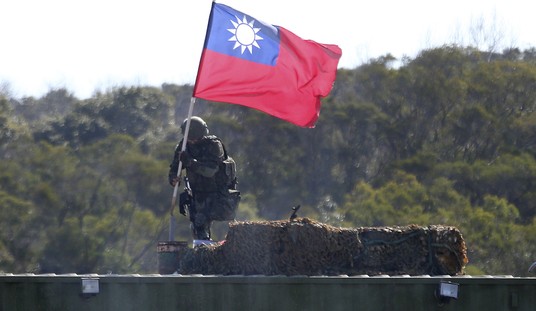Iran has been a problem for the United States since 1979, when President Jimmy Carter’s feckless foreign policy led to a takeover of the government by the mullahs. In the ensuing 30 years things have only gotten worse, with Tehran moving from a terrorist-sponsoring state to one that is actively pursuing nuclear capability in conjunction with a missile program.
It is hard to believe, rhetoric aside, that the Obama administration takes the threat seriously. Back during the 2008 presidential campaign, Barack Obama suggested he would be willing to meet with Iranian President Mahmoud Ahmadinejad without any preconditions in order to achieve an improvement in relations between the two countries. For this he was widely criticized, and he dropped the idea. To date, he hasn’t really come up with anything concrete as a replacement.
In the meantime, Iran has apparently moved ahead with its plans to become a nuclear power. As Defense Secretary Leon Panetta recently acknowledged, Iran could develop a missile that could hit parts of the United States over the next couple of years. What he didn’t say, at least not publicly, is its existing missiles — topped with chemical, biological, or nuclear warheads — could already hit parts of the United States if Iran could find n country unfriendly to the U.S. in the Western hemisphere willing to host it.
The Defense Department has been aware of this threat for some time. As it acknowledged in a 2010 Ballistic Missile Defense Review Report:
The ballistic missile threat is increasing both quantitatively and qualitatively, and is likely to continue to do so over the next decade. Current global trends indicate that ballistic missile systems are becoming more flexible, mobile, survivable, reliable, and accurate, while also increasing in range. A number of states are also working to increase the protection of their ballistic missiles from pre-launch attack and to increase their effectiveness in penetrating missile defenses. Several states are also developing nuclear, chemical, and/or biological warheads for their missiles. Such capabilities could be significant sources of military advantage during a conflict. But they may be equally significant in times of relative peace, when they undergird efforts to coerce states near and far.
Regional actors such as North Korea and Iran continue to develop long-range missiles that will be threatening to the United States. There is some uncertainty about when and how this type of intercontinental ballistic missile threat to the U.S. homeland will mature, but there is no uncertainty about the existence of regional threats. They are clear and present. The threat from short-range, medium-range, and intermediate-range ballistic missiles in regions where the United States deploys forces and maintains security relationships is growing at a particularly rapid pace.
“Clear” and “present.” There is no better way to explain that the threat is real. And the only effective counter to such actions is for the United States to move ahead with its program to defend against incoming ballistic missiles. Unfortunately, the president’s latest budget document takes steps to move those defenses from the real to the theoretical and from the here and now to well into the future.
There are currently three different types of interceptor missiles that are deployed or under development by the U.S. Department of Defense: the SM-3 Block I-A, I-B, and II-A. Block I-A is already in limited use by the U.S. and Japanese navies. Block I-B, the next step in the evolution of the SM-3 missile — which many defense experts believe will provide the first line of defense against a long-range Iranian attack on the continental United States — is slated to go into production in 2013. The third variant, Block II-A, could be deployed by 2018.
The Obama administration, on the other hand, wants to take resources away from these missiles and devote them to something that today is only a concept. Known as Block II-B, it would be the most ambitious missile in the SM-3 family. And according to best estimates it would not be ready for deployment until 2020.
It is something of a mystery as to why the Obama budget, over the objections of Congress, has shifted half the funding for the Block I-B design — which could protect the U.S. against Iran by 2015 — to the Block II-B, which is still just an idea that would not be ready, at best, for another eight years.
The threat, as DOD has amply demonstrated, is very real. Congress has recognized this and in previous years has tried to put the anti-ballistic missile development funding where it will do the most good — not necessarily towards the “best” missile but into programs where it will do the most good and provide the protection the country needs.
The Obama administration, in its budget document, has headed in the other direction, letting the perfect be the enemy of the good and leaving the nation undefended against a threat we can see coming: Iranian missiles in Venezuela would be just as bad as Soviet missiles in Cuba.









Join the conversation as a VIP Member